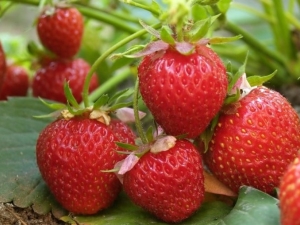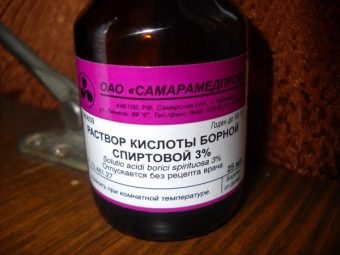How to water Victoria?

Victoria is the most common hybrid of the strawberry family grown on the garden plots of our country.This plant has several advantages compared to, for example, strawberries: and larger berries, and the ability of Victoria's bushes to self-pollination, as it has both male and female flowers on the same plant, and high yield. Garden strawberries (Victoria is also called otherwise), or pineapple strawberries, are capable of producing a very high yield, provided that the proper care of the plantings is ensured.
Having considered further the basic principles of caring for Victoria, it will become clear that it is not difficult to ensure the abundant harvest of this berry if you observe the correct conditions for watering and fertilizing.
Irrigation rules
Consider the basic rules of irrigation, which will beneficially affect the life of Victoria.
- Watering is done in the morning or evening with not very active sun.
- Water for irrigation is chosen only warm: cold can injure the roots of the plant, contribute to the development of root rot and other unpleasant diseases. Watering with cold water is possible only under conditions of low temperatures outside, for example, in early spring. In the summer, watering with warm water triggers growth processes and contributes to the timely ripening of abundant crops.
- The average volume of watering a bush is about 0.5-0.7 liters. Water should be poured gently at the root, especially in the flowering and fruiting periods. Sprinklers used when watering Victoria does not make sense, since using them during the flowering period of the plant can wash the pollen from the flowers.
- Victoria's recently planted bushes should be watered frequently and abundantly during the first two weeks. Watering is done up to several times a day, while the average liquid volume should be about 10 liters per square meter.
- The most abundant watering plants should receive at the very beginning of the growing season - in early spring. At this time, it is necessary to saturate the plants with moisture at least once a week. If the weather is hot, watering should be increased up to 2 times a week.
- During flowering and fruiting, watering is reduced to 1 per month. This is done to make the berries sweeter. At the same time, watering should be very abundant: about 1 liter of water should be applied to 1 square meter of planting.
- Even more watering is reduced in the period from August to the end of the garden season, as cool weather and abundant watering contribute to the decay of the roots.
- All the above recommendations should be correlated with weather conditions: with heavy rains, watering is reduced, with dry hot weather it is worth it to become more frequent.
- Victoria loves loose, breathing soils, so before each irrigation it will not be superfluous to loosen the soil at the roots.
- To protect the roots from drying out, it is recommended to mulch the beds with strawberries with moisture-permeable materials, for example, needles or grass. In addition, this method will help to protect the berries, which are close to the soil, from rotting, and also to neutralize weeds between the rows.
- With frequent basal irrigation, the roots of the plant are exposed. In this case, be sure to spud Victoria bush.
- When watering must take into account the nature of the soil. So, with large quantities of sand in the soil watering is done a little more often.
Top dressing
The combination of proper watering and fertilization is an important factor for the health of Victoria bushes and its abundant fruiting.
- Before planting new plants in the ground, it is necessary to dig up the soil thoroughly and apply the first fertilizers - humus, superphosphate and ash. 0.5 kg of ash, 3 kilograms of humus and 35 grams of superphosphate are applied per square meter. Planting is carried out in well-watered wells, in each of which you can add a little more humus. Ash is diluted with boiling water, so it dissolves better.
- As for the bushes that have long been growing in their places, their first dressing is produced at the beginning of the growing season, more precisely, at the moment when the plant begins to produce its first leaves.During this period, soaked chicken manure or cow dung will be a good fertilizer. Also for the proper development of the plant can make complex fertilizers based on potassium, nitrogen and phosphorus. Two kilograms of chicken manure or 2.5 kilograms of mullein are poured with water and left in a bucket for about 4 days, after which the solution is used to feed the plants (on average about 0.5 liters per bush).
When applying this fertilizer, it is important not to touch the leaves and stems of the bush when watering, but to feed it strictly under the root.
- The second stage of feeding is carried out in the period of active flowering. During this period, nitrate fertilizers are applied, such as ammonium nitrate, for example. It is also worth adding potash fertilizers.
- Autumn dressing is made at the end of the fruiting period, at the end of the summer - in September. The fertilizer is produced with a urea solution, which provides the plant with good growth and a bountiful harvest next year. To replenish the forces expended by the plant, it will be useful to introduce organic fertilizers in the form of chicken manure or mullein.
- The latest dressing should be done at the very end of October. During this period, a two percent solution of wood ash and ammonium nitrate is applied. This stage of feeding is important for plants of the second year of life, for which it is important to increase the volume of greenery on the bushes next year, as well as survive the winter cold and prepare for active fruiting.
Subtleties of care
- Using boric acid in the care of bushes Victoria will help to cope with a number of diseases and pests, as well as provide a plant with high immunity. In addition to the disinfecting effect, the use of boric acid affects the taste of fruits: they become sweeter and tastier. Before planting new plants in open ground, it is advised to maintain their roots in a solution of boric acid with a concentration of 0.02%. Before the flowering of Victoria bushes, they are watered with a 0.1% solution.
- Using yeast as a top dressing has become popular quite recently, but gardeners leave only positive feedback about this method of top dressing. Yeast fertilizers have a multifaceted focus: they increase plant immunity, promote accelerated planting of young bushes in a new place, provide the plant with a set of useful nutrients. When using live yeast, 0.1 kg of yeast is taken to a 10-liter bucket of warm water. This mixture should be infused for about a day. When using dry yeast, sugar should be added to the mixture. On a bucket of water is taken a pack of dry yeast weighing 30 grams and 6 tablespoons of sugar.
First, it is necessary to dilute the yeast in a small volume (1 liter) with added sugar, after infusing for 1–2 hours, dilute with water to the full volume.
See how to water strawberries in the next video.



























